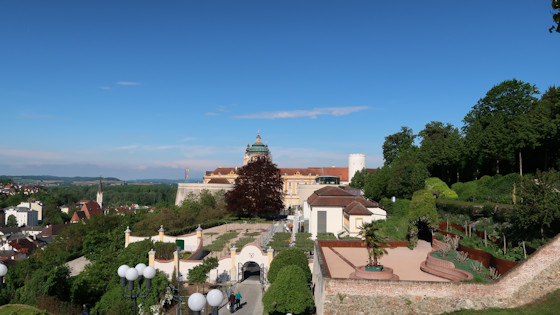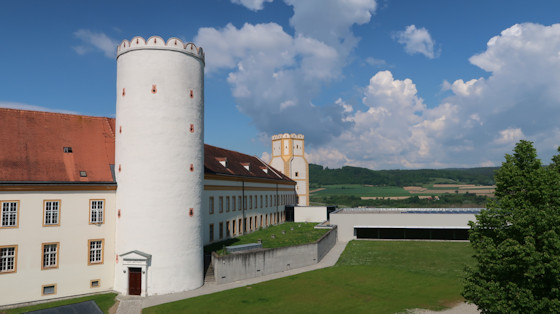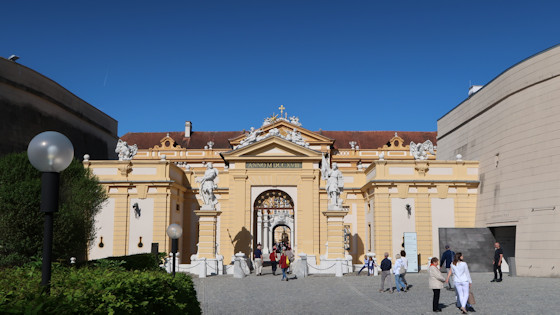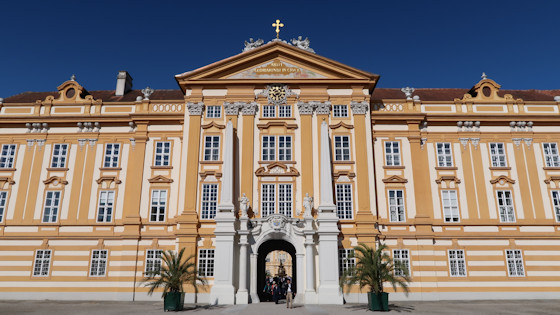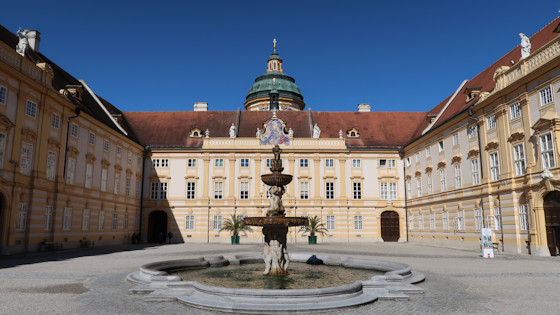The Melk Benedictine Monastery
is situated on a hill above the Danube in Lower Austria at the beginning of the Wachau.
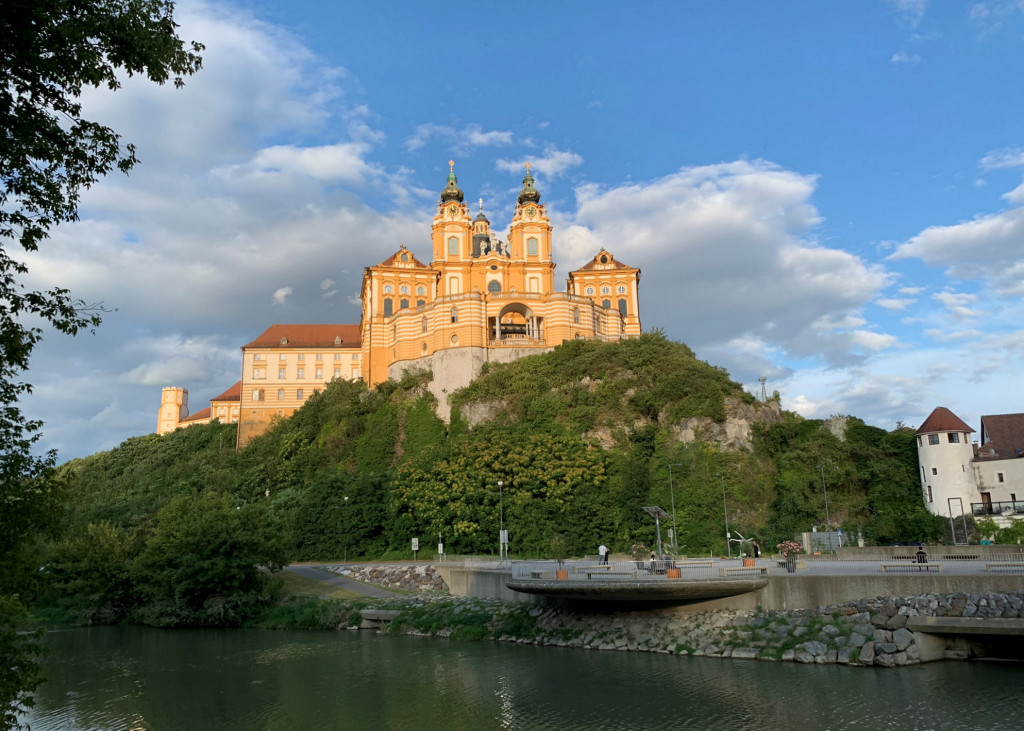
Margrave Leopold I made the castle in Melk his residence in 976 and his successors furnished it with valuable treasures and relics. For about 100 years Melk was the main castle and burial place of the Babenbergs in 'Ostarrichi', Bavaria's eastern Mark. When the margraves extended their power and moved their seat further east to Klosterneuburg, Margrave Leopold II gave the castle to Benedictine monks from Lambach in 1089. Since then monks have lived and worked here in uninterrupted succession according to the Rule of St. Benedict. Already since the 12th century a school has been connected with the monastery and valuable manuscripts have been collected and prepared in the library. At the time of the so-called "Melker Reform" in the 15th century, the monastery was the starting point of one of the most important medieval monastic reforms and maintained close ties with the humanists at the University of Vienna.
The baroque Melk Monastery
The magnificent baroque building, which is visible from afar today, was built by Jakob Prandtauer between 1702 and 1736. Important artists of that time (J. M. Rottmayr, P. Troger, L. Mattielli, A. Beduzzi, J. W. Bergl, P. Widerin etc.) contributed to the construction. After a fire in 1738, the church towers were fitted with the rococo helmets visible today.
Abbey visit:
The Kaiserstiege (Emperor Staircase) leads to the first floor, where the tour starts in the 196m long Kaisergang (Emperor's Corridor).
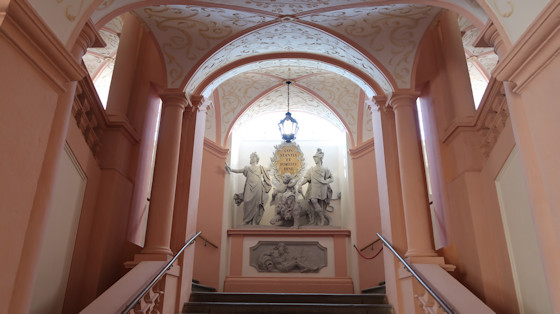
During the tour you will be surprised by a flood of pictures and frescos. Here is a small compilation of the paintings that one should see.
Famous in Melk Abbey are the frescoes in the Abbey Church by Johann Michael Rottmayer (1716-1722) and/or the ceiling frescoes in the Marble Hall and Library by Paul Troger from 1731 and 1732. Further Troger-frescoes can be found outside the viewing area in the Festival Hall of the Prelature, in the Kolomani Hall and in the Imperial Oratory.
Five of the six altarpieces of the collegiate church are also from Rottmayr and Troger. The sixth altarpiece, that of the Leopoldi Altar by Georg Bachmann (1650), is the only painting that was taken over from the old collegiate church in the baroque new building. It was probably reinstalled because it depicts the founding history of Melk.
A special feature is the gallery on the Kaisergang. It is a closed series of larger-than-life portraits of all Austrian regents from Leopold I to Emperor Karl I by Josef Kremer (around 1750) and from Maria Theresa onwards by contemporary painters.
The altarpieces by Jörg Breu the Elder (around 1500/1502) are remarkable in the newly designed Abbey Museum. These are eight panels, painted on both sides, of a late Gothic winged altar with depictions of Mary's life and the Passion story, among other things.
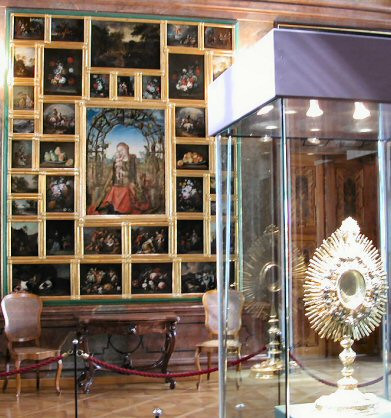
For me as a Cranach fan, the highlight is the Prelature's banqueting hall, which houses a baroque picture gallery with the panel painting "Madonna in the Vine Arbour" by Lukas Cranach (around 1525) and 146 small-format paintings, mostly copies after works from the 17th and 18th centuries. Unfortunately the banqueting hall is only open to the public on special occasions. I was lucky!
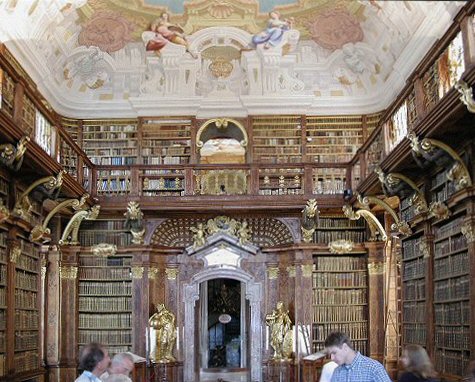
Library with ceiling painting by Paul Troger
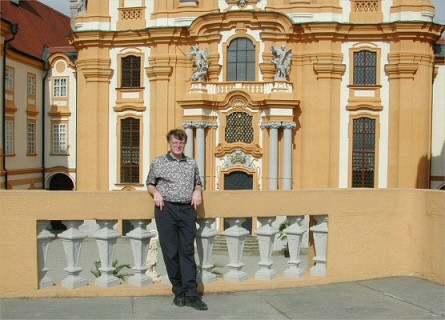
The altane is the connecting balcony between the marble hall and the library. From the Altane there is a beautiful view of the Danube, the Wachau landscape as well as of the town of Melk and the Danube hydropower plant.
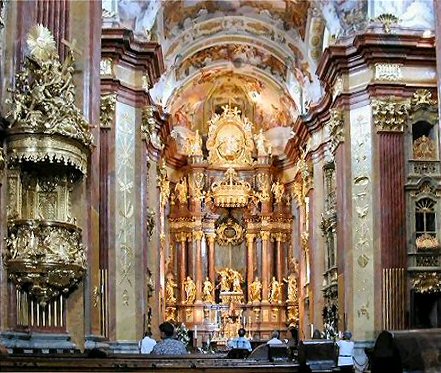
A view into the collegiate church. At the high altar the martyrdom of the apostles Peter and Paul is embodied.
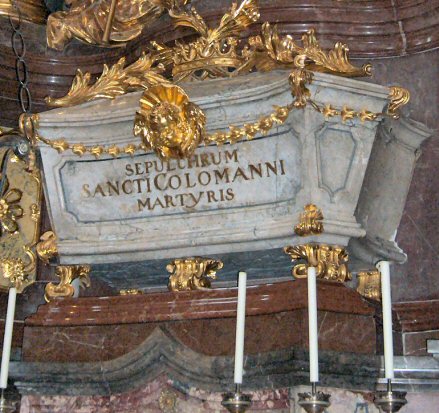
The left side altar in the transept contains the bones of Saint Koloman in a sarcophagus.
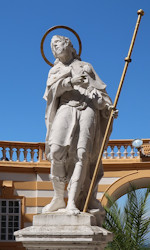
His statue stands to the west in front of the church.
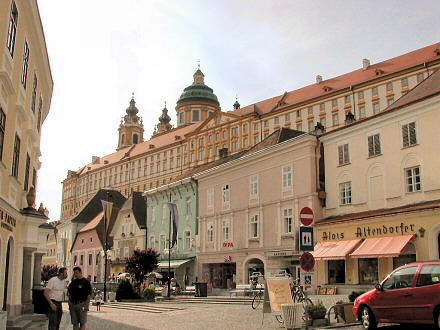
The impressive 320 meter long outer front of the monastery.


Danube cycle route
